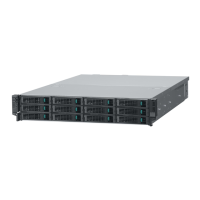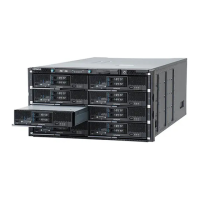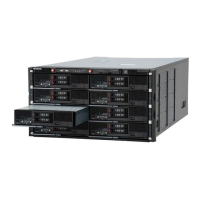Notation used in audit log messages
Table 9-1 Notation used in audit log messages
Item Description
xxx • The parameter value is output.
• If there is no applicable value, "*" is output.
LPARxxx • The LPAR number and LPAR name are output, separated by a colon (:).
(Example: "LPAR1:NO_NAME")
• If there is no applicable LPAR, "LPAR*" is output.
ProcessorGroupxxx • The processor group number and processor group name are output, separated
by a colon (:). (Example: "ProcessorGroup0:NO_NAME")
• If an undefined processor group number is specified, an asterisk is output
instead of the processor group name. (Example: "ProcessorGroup10:*")
Rolexxx • The role number and role name are output, separated by a colon (:).
(Example: "Role0:Administrators")
• If an undefined role number is specified, an asterisk is output instead of the
role name. (Example: "Role5:*")
List of audit log messages
Table 9-2 List of audit log messages (Authentication)
ID Message
Operation for which an audit log is
collected
01001000 1. When the Virtual COM console is used:
"Logged in to the LPAR manager.
Username:xxx Session ID:xxx Source
IP address:xxx Method:xxx LPARxxx
VC:xxx Destination port:xxx"
2. When the LP Web system or the HvmSh
is used:
"Logged in to the LPAR manager.
Username:xxx Session ID:xxx Source
IP address:xxx Method:xxx
Destination port:xxx"
When the login to LPAR manager succeeds
01001001
"Failed to login to the LPAR manager.
Username:xxx Source IP address:xxx
Method:xxx"
When the login to LPAR manager fails
01001002
"Logged out from the LPAR
manager.Username:xxx Session ID:xxx
Source IP address:xxx Method:xxx"
When the logout from LPAR manager
completes
Messages
9-57
Hitachi Compute Blade 500 Series Logical partitioning manager User's Guide

